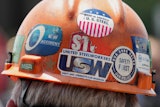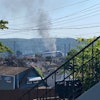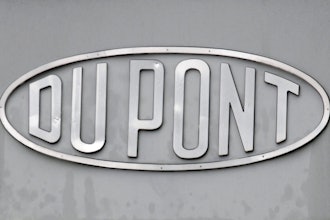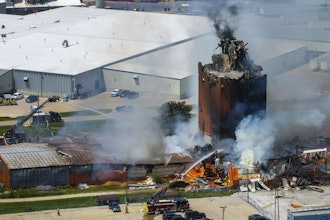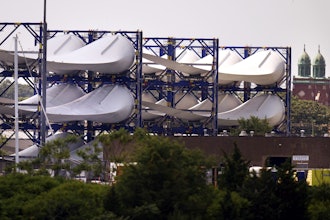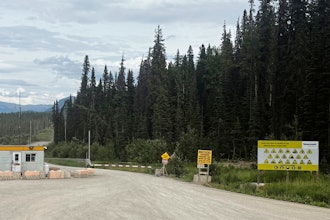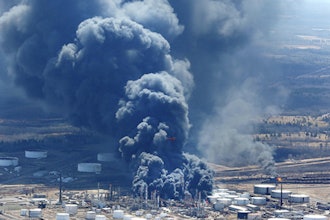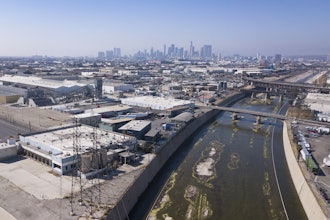With industrial facilities facing increased pressure to save costs and maximize space efficiency, many are looking upward instead of outward when considering expansion. Elevated work platforms and multi-level racking systems allow companies to add floor space without adding to the facility’s footprint, which is generally less costly and time-consuming than expanding outward, leasing new space, or constructing a new facility.
Unfortunately, these elevated environments also create safety challenges. According to the Occupational Safety and Health Administration (OSHA), falls are among the most common causes of serious work-related injuries and deaths. Falls, slips or trips account for 15 percent of all accidental deaths (second only to motor vehicle accidents) and falls specifically account for 80 percent of those fatalities. The National Security Council estimates that these types of workplace injuries constitute approximately $70 billion annually in workers’ compensation and medical costs.
OSHA Regulations And ANSI Standards
A division of the U.S. Department of Labor, OSHA is charged with developing and enforcing safety standards within the work environment. While OSHA regulations are law and must be followed by employers and their work force, OSHA is charged with regulating a wide variety of industries and can’t stay on top of rapidly-evolving changes within specific industries. As a result, many companies look to organizations like the American National Standards Institute (ANSI) for “best practice” guidelines. ANSI promotes voluntary consensus standards that are widely recognized as comprehensive, up-to-date, and reliable when it comes to workplace safety. Compliance with ANSI standards ensures that companies are implementing the most advanced safety standards in their respective industries.
As defined by the ANSI standard: Specification for the Design, Manufacture and Installation of Industrial Work Platforms (MH28.3: 2009), industrial work platforms are prefabricated elevated structures (e.g., mezzanine) located in an industrial environment, pre-designed with a steel framing system. Flooring may include other structural or non-structural elements such as, but not limited to: concrete, steel, and/or engineered wood products. This specification is intended to be applied to the design, manufacturing, installation, and maintenance of such structures.
ANSI Standard 6.4.3 goes on to state that any gate providing access opening through the guards for the purpose of loading and unloading material onto a work platform shall be designed such that the elevated surface is protected by guards at all times. Gates that swing open, slide open, or lift out, leaving an unprotected opening in the guarding, are not acceptable.
Elevated Platform Safety Solutions
Based on current standards, industrial mezzanines must have handrails and gates around all edges; however, these gates need to be opened from time-to-time to accommodate the loading and unloading process. According to the ANSI standard, companies must provide full-time protection when loading and unloading materials from an elevated platform — there can be no exposed areas where an employee could potentially fall. As a result, many companies are seeking a solution to secure elevated work environments.
Dual reciprocating barriers are becoming increasingly popular for this application, since they create a controlled access area in which the inner gate and outer gate cannot be opened at the same time. Leading models use a link bar design that ensures both gates work in unison; when the outer gate opens to allow pallets in, the inner gate automatically closes to keep workers out. After the pallet is received, mezzanine-level workers open the inner gate to remove material from the work zone while the outer gate closes to secure the leading edge of the platform. A safety latch that can only be accessed when standing outside the work zone prevents the outer gate from being raised by a worker inside the work area. Although automatic barriers are available, leading manual barriers are relatively easy to use. Look for designs with a raised toe board to prevent materials from accidently being pushed off the elevated edge.
Pick Module Safety
In addition to mezzanines and elevated work platforms, many companies are integrating multi-level pick modules within their facilities to handle order fulfillment. Pick modules are typically constructed using a metal support structure, flooring, stairways, handrails, and landings. Products are stored in shelving and racks and are “picked” to conveyors, totes, carts, and other transportation systems.
Multi-level rack systems pose a number of challenges when it comes to securing open areas during the loading and unloading process. The work areas are typically very small and are contained within the rack system itself, which makes it difficult to integrate traditional safety barrier designs.
Modified reciprocating barriers are an increasingly popular solution for these applications, as well. While they function similarly to reciprocating mezzanine barriers (inside gate can’t open when the outside gate is, and vice versa), they utilize the existing rack structure to minimize the footprint in existing or new installation rack bays. Leading models can fit within virtually any type of rack configuration and meet applicable OSHA, ANSI and IBC standards, including the aforementioned ANSI standard for elevated work platforms (MH28.3: 2009).
Protecting Employees and the Bottom Line
Elevated work areas such as pick modules and mezzanines are increasingly common in industrial and chemical facilities across the United States. Since they can be a highly cost-efficient way for facilities to add floor space without expanding the physical footprint of their plant, most industry experts expect this trend to continue. In order to provide the necessary safety for employees and to protect products, facility managers contemplating the addition of elevated workspaces must take OSHA-mandated safety regulations — and should take ANSI best practices guidelines — into consideration when designing and outfitting these areas. In both cases, dual reciprocating barriers can be a key element in safeguarding employees and ensuring regulatory compliance.
Andy Olson is the Rite-Hite marketing manager.
The information herein is provided as a general reference regarding the use of the applicable product(s) in specific applications. This information is provided without warranty. It is your responsibility to ensure that you are using all mentioned products properly in your specific application and in accordance with all laws and regulations.
